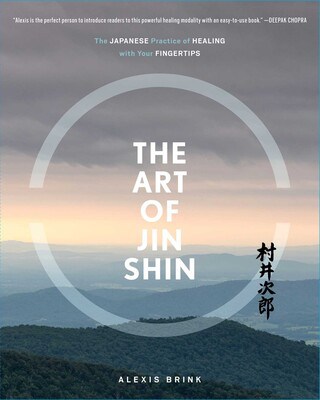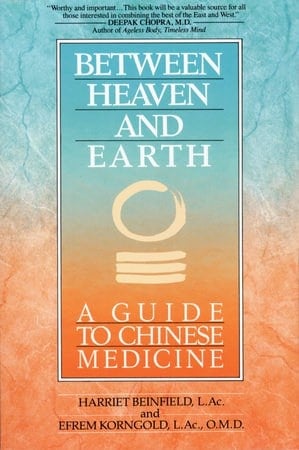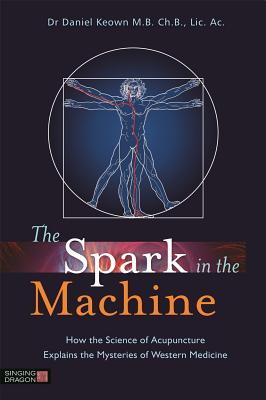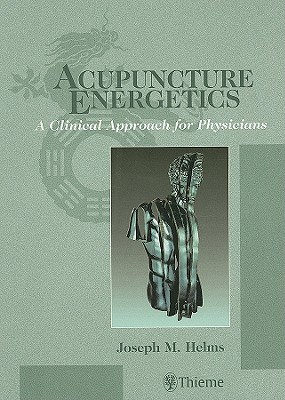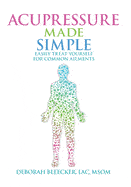Therapy
Energy Therapy: Overview, Benefits, and Effectiveness
THC Editorial Team December 11, 2020

Contents
- Overview
- What Is Energy Therapy?
- History of Energy Therapy
- When Is Energy Therapy Used?
- How Does Energy Therapy Work?
- What Are the Different Types of Energy Therapy?
- Potential Benefits of Energy Therapy
- Effectiveness of Energy Therapy
What Is Energy Therapy?
Although several ancient concepts inform it, energy therapy is a relatively new method of psychotherapy. By combining alternative Eastern healing techniques with biomedical and conventional approaches to mental health, energy therapy promotes a holistic approach to well-being. Broadly, these practices target the notion of energy in the human body. For many practitioners, energy in the realm of psychology refers to the vital force within an individual.1
Belief in a universal energy system and healing energy has existed throughout history. The flow of universal healing energy has been referred to as “‘Prana’ in India, ‘Chi’ in China, ‘Ruarch’ for Hebrews, ‘Mana’ in Hawaii, and ‘Wairua’ for the Aotearoa New Zealand Maori people.”2
Throughout history, energy healing modalities have existed. According to vanderVaart, Gijsen, de Wilt, and Koren, “Hippocrates referenced the ‘biofield’ of energy flow from people’s hands, the Indian Chakra system is based on energy centers in the body, and Eastern energy practices such as qigong rely on the breath to balance the body’s energy field.”3
According to Vitale (2007), “Energetic balance or harmony involves biopsychosocial and spiritual integration, commonly expressed as physical and spiritual healing. This concept serves as a major foundation for complementary and alternative medicine (CAM) energy work.”4
Within energy therapy, practitioners tend to use two main approaches. Some therapists allow energy within them to flow to the patient. Others balance or redistribute the vital energy already within the patient.
The Chakra System
Within energy therapy, practitioners often focus on seven concentrated energy centers throughout the human body, known as chakras, to inform their techniques. The seven chakras are as follows.5
Muladhara, or root chakra.
The root chakra is located at the base of the spine.
Svadhishthana, or sacral chakra.
The sacral chakra is located in the lower abdomen, below the belly button
Manipura, or solar plexus chakra.
The solar plexus chakra is located in the upper abdomen
Anahata, or heart chakra.
The heart chakra is located in the center of the chest
Vishuddha, or throat chakra.
The throat chakra is located in the throat
Ajna, or third eye chakra.
The third eye chakra is located between the eyebrows
Sahasrara, or crown chakra.
The crown chakra is located at the top of the head
What is the History of Energy Therapy and Energy Psychology?
Although the concept of energy is pervasive, its specific meaning and social relevance have differed around the world throughout human history. In contrast, energy therapy as a codified practice with particular methods is relatively new.6
In the 1960s, a chiropractor named George Goodheart found that muscle testing (applying pressure to muscles and examining their resistance to force) could be used to learn more about how the body, the mind, and energy chakras are linked.6 Goodheart found that simply running his hand above an energy pathway often strengthened weak muscles. Building on this finding, a psychiatrist named Roger Callahan then developed Thought Field Therapy (TFT), a psychological intervention in which a sequence of acupressure points are tapped to eliminate anxiety or psychological distress.6
In the 1990s, clinical psychologist Fred Gallo built on both Goodheart’s and Callahan’s work and coined the term “energy psychology” to refer to the study of how energy systems affect behavior.6 Since then, energy therapy has become an area of interest, and practitioners and researchers continue to explore techniques that use energy within mental health therapies to support people’s overall well-being.
When Is Energy Therapy Used?
Energy therapy can benefit individuals who deal with the following conditions, among others:
- posttraumatic stress disorder (PTSD)7
- depression8
- anxiety disorders (e.g., general anxiety disorder, specific phobias, panic disorder) and obsessive-compulsive disorder9,10
- stress (e.g., acute stress, parent-child stress, relationship stress, and work stress)10
- fatigue10
- bereavement10
- nausea10
- adjustment disorder10
- substance cravings (e.g., for alcohol, nicotine, or maladaptive foods)10
How Does Energy Therapy Work?
Although several variants of energy psychology exist, the mechanisms through which each operates are similar. Energy therapy is based on the premise that when an individual feels distress, anxiety, or another adverse emotion, the person’s subjective experience of the emotion manifests in both mind and body. This manifestation is accompanied by a pattern in the person’s energy system that can be detected through muscle testing. By stimulating (e.g., tapping or applying pressure) to a series of chakra points, the energy pattern may be eliminated, which may eliminate the subjective disturbance in the person’s mind and body.11
Energy therapy is a convenient, mobile, and highly accessible form of therapy. An energy therapist or practitioner often conducts it; however, many forms of energy therapy can also be self-administered. In the latter case, people typically prefer to practice energy therapy in quiet, peaceful locations with no distractions.
When conducted by an energy therapist or practitioner, energy therapy typically takes place in a private office, or their designated work location. A therapist provides the client with guidance about where and how to tap on chakras and energy points.11 In some forms of energy therapy, therapists may incorporate and tune into their own energy systems to “read” and interpret the energy of the client or to form a combined energetic field to create a healing intention.11
What Are the Different Types of Energy Therapy?
Many different forms of energy therapy exist. Some of the more popular forms are listed below.
Thought Field Therapy (TFT)
This is a form of self-administered, rapid, and noninvasive therapy focused on targeted symptoms or problems. The technique involves finger tapping on meridian points in the body, which are pathways through which energy flows, using tapping sequences specific to a particular thought field.10 This practice is limited to the upper body and hands.
Emotional Freedom Techniques (EFT)
Emotional freedom techniques (EFT) is primarily a type of self-administered therapy in which the individual uses their fingertips to tap energy points on the body where there is a buildup or blockage of energy. Tapping is done in a specific sequence, most commonly on the head and face. During tapping, the individual should focus their thoughts on the issue they want to resolve.8
Reiki
In this form of hands-on-body healing, or palm healing, a client lies down on some comfortable surface, and a practitioner lightly places their hands on or above specific areas of the body. The belief is that energy, specifically universal life energy, flows from the practitioner, through their hands, to the client. To practice Reiki, one must receive an attunement to align their energy and unblock their qi, or vital energy.
Healing Touch (HT)
In healing touch therapy (HT), a practitioner places their hands above a client’s body as the client lies down. No physical contact is made. Unlike Reiki, an HT practitioner does not require an attunement.
Qigong
Qigong is a form of self-administered or practitioner-led healing that allows individuals to control the energy flowing through them. Qigong includes relaxed and controlled breathing; slow, deliberate movements; and deep mental focusing.9
Jin Shin Jyutsu
Jin Shin Jyutsu is a Japanese technique for harmonizing a person’s bodily energy system. However, unlike massage or acupressure, Jin Shin Jyutsu practitioners do not manipulate or adjust a client’s body. Instead, this technique calls for practitioners to place their hands on specific bodily points, such as the hands, wrists, and other joints, to facilitate energy flow.
Tapas Acupressure Technique (TAT)
Tapas Acupressure Technique (TAT) is a form of self-administered therapy that involves applying light pressure to meridian points in the body to release built-up energy or blocked energy pathways.12 While applying pressure to these acupressure points, the individual recites nine statements. The general idea of each statement and examples of each are as follows:13
- The problem: “This happened.”
- The opposite condition: “This happened, it’s over, and I’m okay. I can relax now.”
- The places: “All the places in my mind, body, and life where this has been stored are healing now.”
- The origins: “All the origins of this are healing now.”
- Forgiveness: “I accept forgiveness from myself and everyone involved.”
- The parts: “All the parts of me that were involved in this are healing now.”
- Everything that’s left: “Everything that’s left about this is healing now.”
- Choosing: “I choose ______. I completely allow and accept this.”
- Integration: “All of this is completely integrated now, with my grateful thanks.”
Potential Benefits of Energy Therapy
According to scientific research, energy therapy yields a wide variety of benefits for those who use it. Studies have identified numerous potential benefits of specific types of energy therapy.
TFT improves the following:
- heart rate variability (HRV)14
- self-reported suffering7
- symptoms of trauma7
- posttraumatic stress disorder7
- distress10
- chronic pain10
- symptoms of major depressive disorder10
- obsessive traits and obsessive-compulsive disorder10
- stress and anxiety10
- Relationship stress, parent-child stress, and work-related stress10
EFT improves the following:
- symptoms of anxiety8,15
- posttraumatic stress disorder8,15
- specific phobias8
- pain
- frequency and symptoms of tension headaches15
- symptoms of fibromyalgia15
- insomnia15
- seizure disorder15
- immune function16
- reduced resting heart-rate16
- reduced blood pressure16
- reduced cortisol levels16
- symptoms of depression17
Reiki improves the following:
- depression18
- anxiety18
- well-being19
- feelings of peace, calm, and relaxation
- increased sensory perception and awareness
- increased sense of spirituality
- pain reduction19
- stress reduction19
- improved positive affect (positive emotional feelings and moods).19
- reduced negative affect (negative emotional feelings and moods). 19
- improved immune system function.19
- improvements in shortness of breath.19
- reduced heart rate20
- reduced blood pressure20
- increased heart rate variability20
- improved self-esteem20
Qigong improves the following:
- symptoms of depression9
- symptoms of anxiety9
- anger9
- fatigue9
Jin Shin Jyutsu improves the following:
- relaxation and stress reduction21
- anxiety22
- pain
- reduced heart rate23
- reduced nausea24
Effectiveness of Energy Therapy
Although the concept of healing energy may be as old as time, some scholars and clinicians are still skeptical of energy therapies and tend to see them as “fringe.”25 There are hundreds of articles published in peer-reviewed journals on the effectiveness of various forms of energy therapy – some much more than others – and while there is substantial support for their effectiveness, the field could benefit from numerous more robust studies.
Thought Field Therapy (TFT)
TFT has received some attention from researchers. For example, in a 2001 study, 45 patients with one or more anxiety disorders were assigned to an active TFT group or a wait-list group. After 2.5 months, the TFT group showed significant reductions in general mental distress, anxiety, depression, and functional impairment in social life, work or school, and family life. These results were maintained at 3- and 12-month reassessments.26 Generally, TFT seems to be effective for anxiety disorders and stress disorders, specifically PTSD.
Emotional freedom techniques (EFT)
Various systematic reviews and meta-analyses have demonstrated that EFT significantly reduces the symptoms of anxiety, PTSD, and depression.8,27 A 2013 study using a randomized control design found significant improvements in symptoms experienced by veterans with PTSD following EFT. The researchers recruited 59 participants. Of those individuals, 30 participants were assigned to an EFT group, and 29 participants were assigned to a standard-of-care/wait-list group. The EFT group participants received six 1-hour EFT sessions along with the standard of care. Results of the study indicated that the EFT group had significantly reduced psychological distress and PTSD symptoms. Furthermore, 90% of the EFT group no longer met the clinical markers for a PTSD diagnosis, compared with 4% of the standard-of-care/wait-list group.28
Reiki healing
Research shows that feelings of safety and inner peace induced by Reiki make it a significantly beneficial form of therapy for individuals who experience anxiety, chronic stress, and depression.1
Healing touch (HT)
A review of studies in the early 2000s indicates that HT led to reductions in stress, symptoms of depression, symptoms of PTSD, and fatigue.29 Although the results were promising, these studies were preliminary, and the samples were small; therefore, more research is needed.
Qigong
Preliminary evidence from a systematic review of studies focused on Qigong indicated that people with chronic illnesses who used Qigong experienced improvements in anxiety, depression, and psychological well-being.9
Jin Shin Jyutsu
Research on Jin Shin Jyutsu shows that the practice seems to help people deal with chronic conditions by relieving the stress, anxiety, and sometimes pain associated with them.22
Tapas acupressure technique (TAT)
The efficacy of TAT as a form of therapy has not yet been extensively researched.












